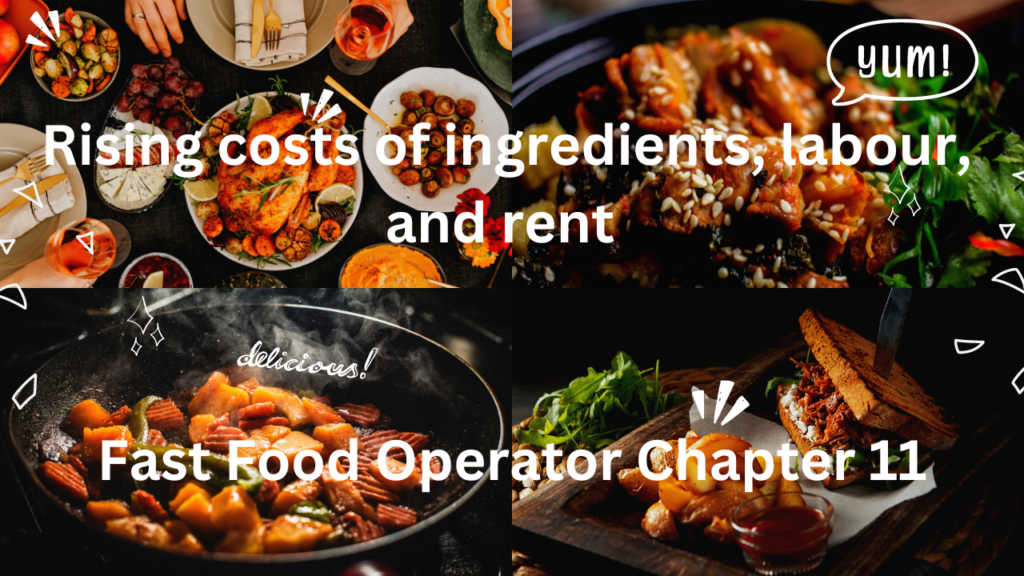Fast Food Operator Chapter 11 is multifaceted. The industry has been grappling with the rising costs of ingredients, labour, and rent, which have squeezed profit margins to a breaking point for some. The fast food industry, a cornerstone of the global economy, is currently navigating through a maze of financial and operational challenges. These difficulties have prompted a growing number of operators to file for Chapter 11 bankruptcy, a move that underscores both pressures on the sector and the potential pathways to recovery. The reasons behind these filings examine the implications, and explore the strategies companies are adopting to emerge stronger.
Why Fast Food Operators Chapter 11 is Turning
Here, the discussion turns to the specific economic pressures and operational challenges that compel fast food operators to seek Chapter 11 protection. From macroeconomic factors like inflation and rising costs to industry-specific hurdles such as intense competition and evolving consumer tastes, this section paints a picture of the dire circumstances that lead companies to this crossroad.
Digital Transformation
The advent of digital technology has transformed consumer expectations and the competitive landscape for fast food operators. This subsection examines the necessity for businesses to invest in digital ordering systems, mobile apps, delivery platforms, and other technological advancements to meet customer demands for convenience, speed, and personalization. While these investments can drive sales and enhance customer engagement, they also represent a substantial upfront cost. For businesses already navigating thin profit margins and financial challenges, the requirement to allocate resources towards digital transformation can be daunting, contributing to the financial pressures that lead to Fast Food Operator Chapter 11 filings.
Understanding Chapter 11
This subsection breaks down the fundamentals of Chapter 11 bankruptcy, clarifying its purpose as a reorganisation tool rather than an endgame of business failure. It elucidates how this legal process allows businesses to continue their operations while restructuring their debts under court supervision, offering a beacon of hope for troubled companies.
Consumer Trends Shaping the Future of Fast Food
The pivotal shifts in consumer behaviour and preferences that are driving change within the fast food industry. As these trends evolve, they not only influence menu offerings and marketing strategies but also dictate the broader strategic direction for fast-food operators seeking to remain competitive and relevant. This section is further divided into two critical areas: “The Health and Wellness Revolution” and “Sustainability and Ethical Practices.”
The Health and Wellness Revolution
This subsection explores the growing consumer demand for healthier eating options, reflecting a broader societal shift towards wellness and nutrition. As awareness around the impacts of diet on health and well-being increases, consumers are increasingly seeking out meals that not only satisfy their hunger but also contribute to their overall health goals. This trend has prompted fast food operator Chapter 11 to rethink their traditional menus, which high-calorie, processed foods have historically characterized.
Sustainability and Ethical Practices
Focusing on sustainability, this part would examine how environmental and ethical considerations are becoming increasingly important to consumers and, by extension, to fast food operators Chapter 11. Topics would include the adoption of sustainable packaging, efforts to reduce food waste, and commitments to ethical sourcing. This section would argue that sustainability is not just a moral imperative but also a competitive differentiator in the fast food industry.
Reimagining the Fast Food Experience
Envisions a future where fast food operators Chapter 11 transcends traditional boundaries, offering enhanced customer experiences through innovative service models, menu creativity, and engaging digital interactions. This forward-looking perspective underscores the industry’s potential for reinvention and growth.
Conclusion: Fast Food Operator Chapter 11
As we have journeyed through the intricate landscape of Fast Food Operator Chapter 11 filings within the fast food industry, it’s evident that these legal manoeuvres signify much more than mere financial distress. They represent a crucial pivot point—a strategic reset for businesses grappling with the rapid evolution of consumer preferences, technological advancements, and escalating operational costs. The fast food operator chapter 11 sector, once seen as a bastion of convenience and affordability, now finds itself at a crossroads, challenged to redefine its value proposition in an era increasingly defined by health consciousness, sustainability, and digital integration.
The path through Chapter 11 bankruptcy, while fraught with challenges, offers these operators a unique opportunity to reassess and realign their business models with contemporary market dynamics. It’s a chance to shed unprofitable ventures, renegotiate debt, and emerge leaner, more focused, and agile.












